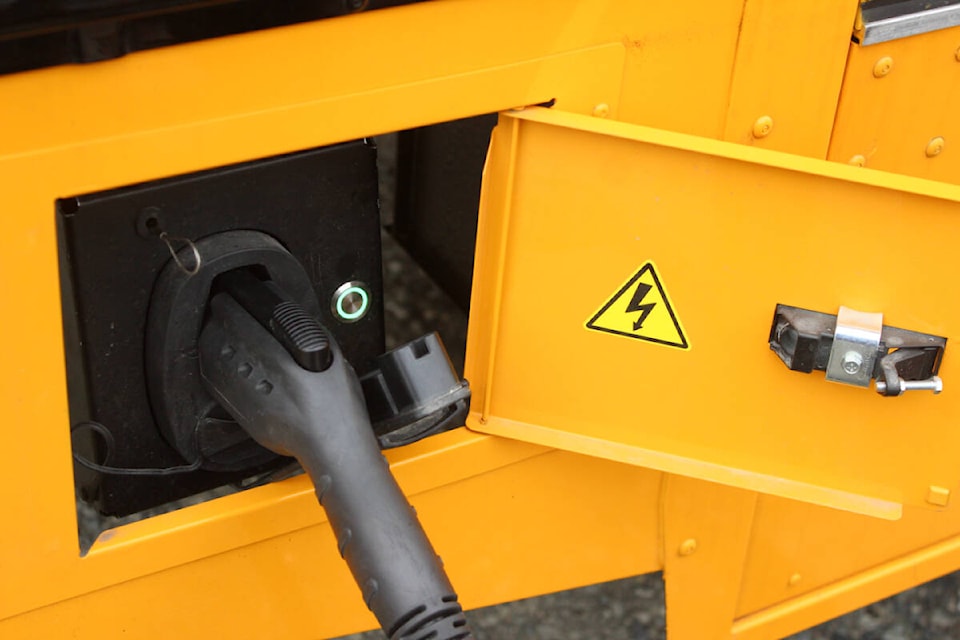Nanaimo Ladysmith Public Schools’ electric buses have travelled down a bumpy road thus far, says a school district executive.
The district’s electric fleet currently consists of seven buses, along with six maintenance vehicles, and at the April 10 business committee meeting, Mark Walsh, secretary-treasurer, said electrification has “not been a fun ride” so far.
Among the district’s headaches have been earlier-than-expected repairs and bus unavailability due to problems with charging and software, according to a staff report. Buses are required to be shipped to manufacturers on the Lower Mainland for repairs and Walsh said there have been delivery delays and bugs, as many companies are new to building electric vehicles. There have been fewer buses available at times, he said, and in addition, bus drivers are short in supply.
The EV buses are often used for charter service in between runs, leading to increased mileage, the district told the News Bulletin in an e-mail.
“We’ve had a minor shifts and cancellations, but where we are seeing an impact is our ability to support schools with charters…” Walsh said at the meeting. “What that does is, if you’re going out of town, the expense associated with chartering a bus not within the school district actually can make it cost-prohibitive, so it’s a very unintended consequence of a positive, environmental move.”
.
Pete Sabo, SD68 executive director of planning and operations, said staff do have the ability upgrade skills to maintain vehicles via training from the Association of School Transportation Services, which the district takes advantage of.
“Mechanics are quite flexible and used to ongoing training…” he said. “They get certified in working on certain portions and we also work with the manufacturers to understand what parts we can work on … one of the issues we have is that some of the items we just can’t work on, because they’re under warranty or they’re items that only can be done by service technicians from the company.”
Sabo said the district is also struggling to keep up with its complement of mechanics and while not in an optimal position, staff is adopting EV requirements.
Walsh also said B.C. Hydro and the B.C. government have been supportive and electrifying the fleet is a positive move aligning with the district’s long-range facilities plan and environmental sustainability goals.
The district said it is reaching out through social media and print advertising to try to attract people interested in part-time bus driver work.
